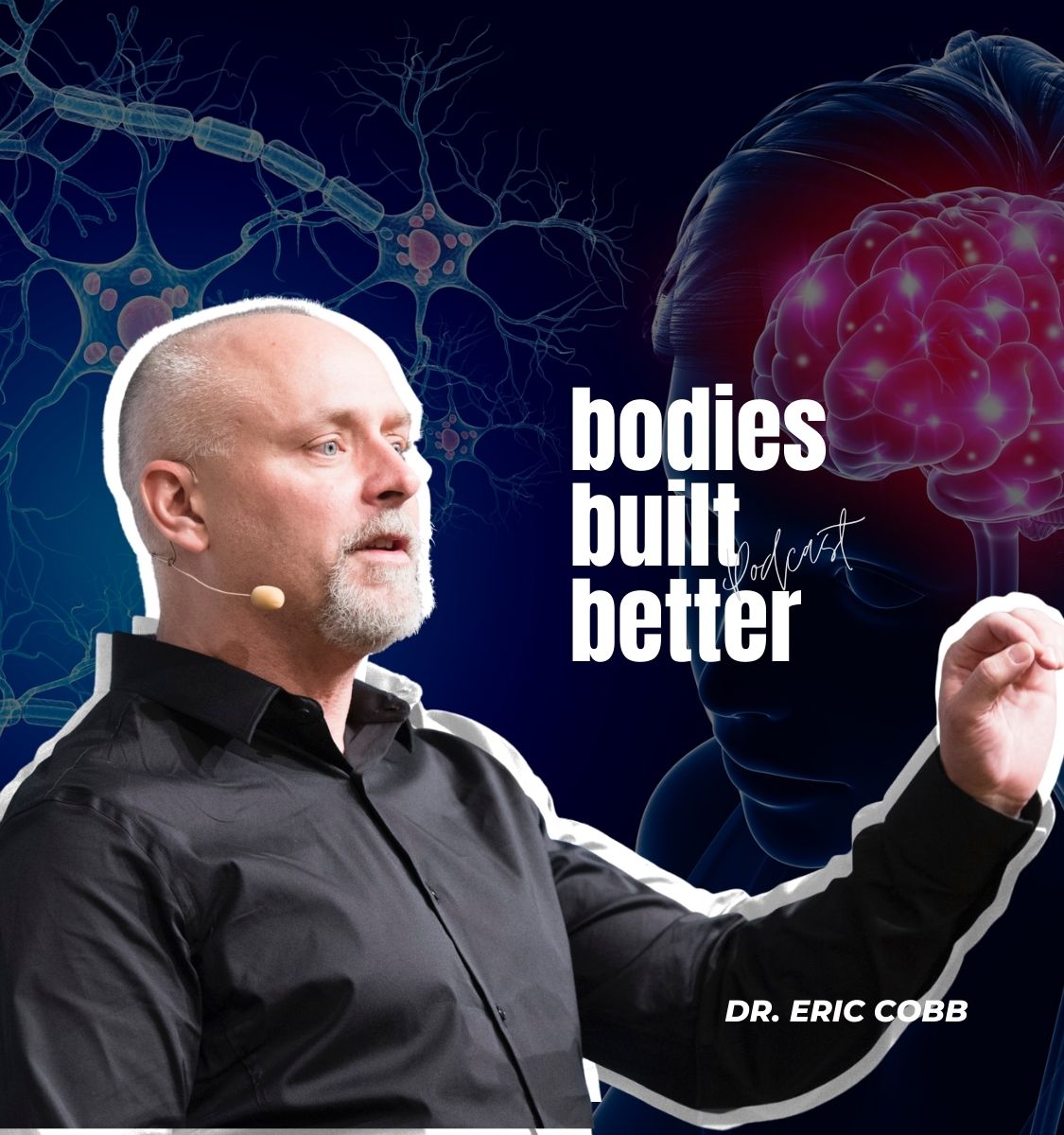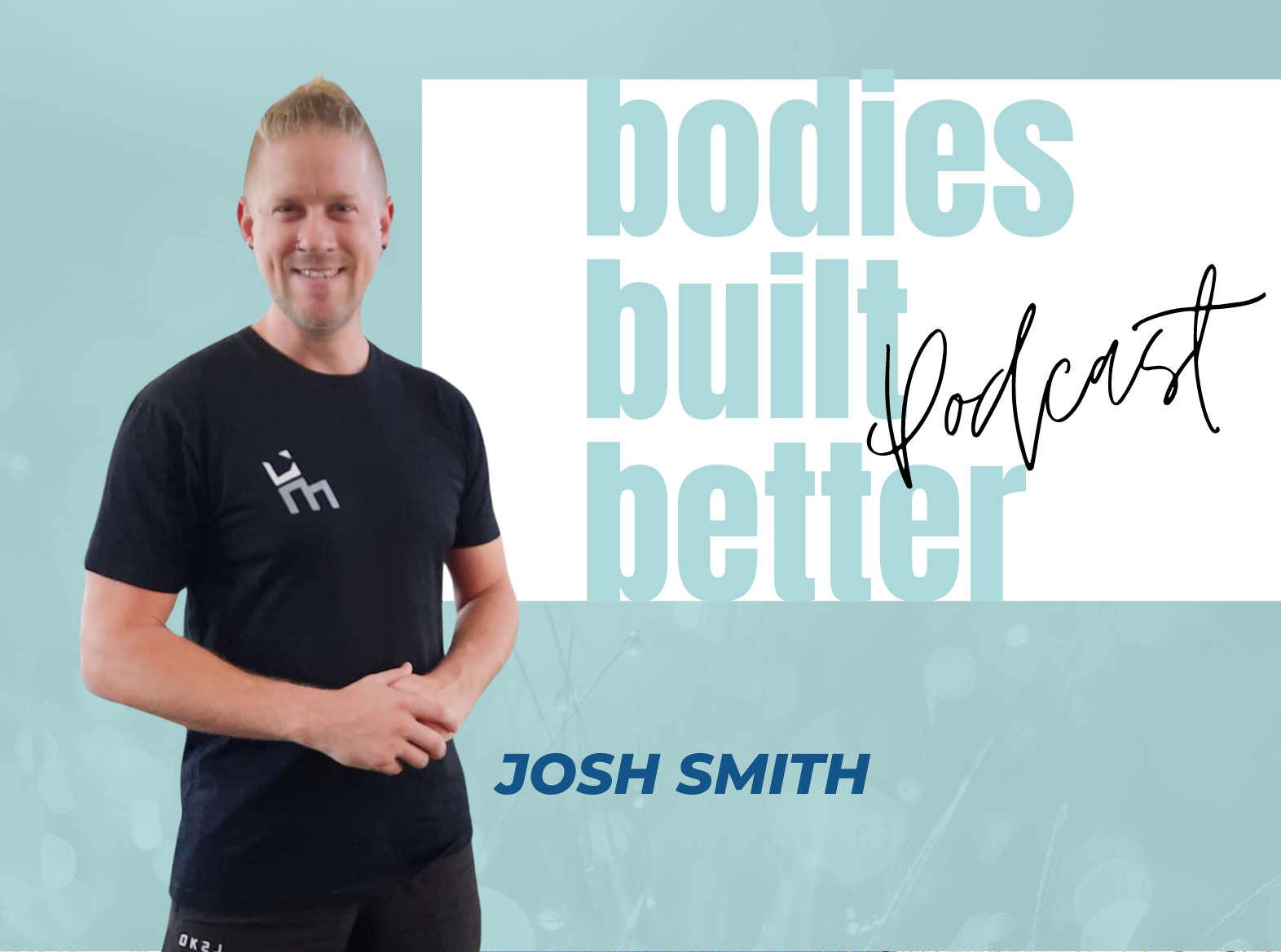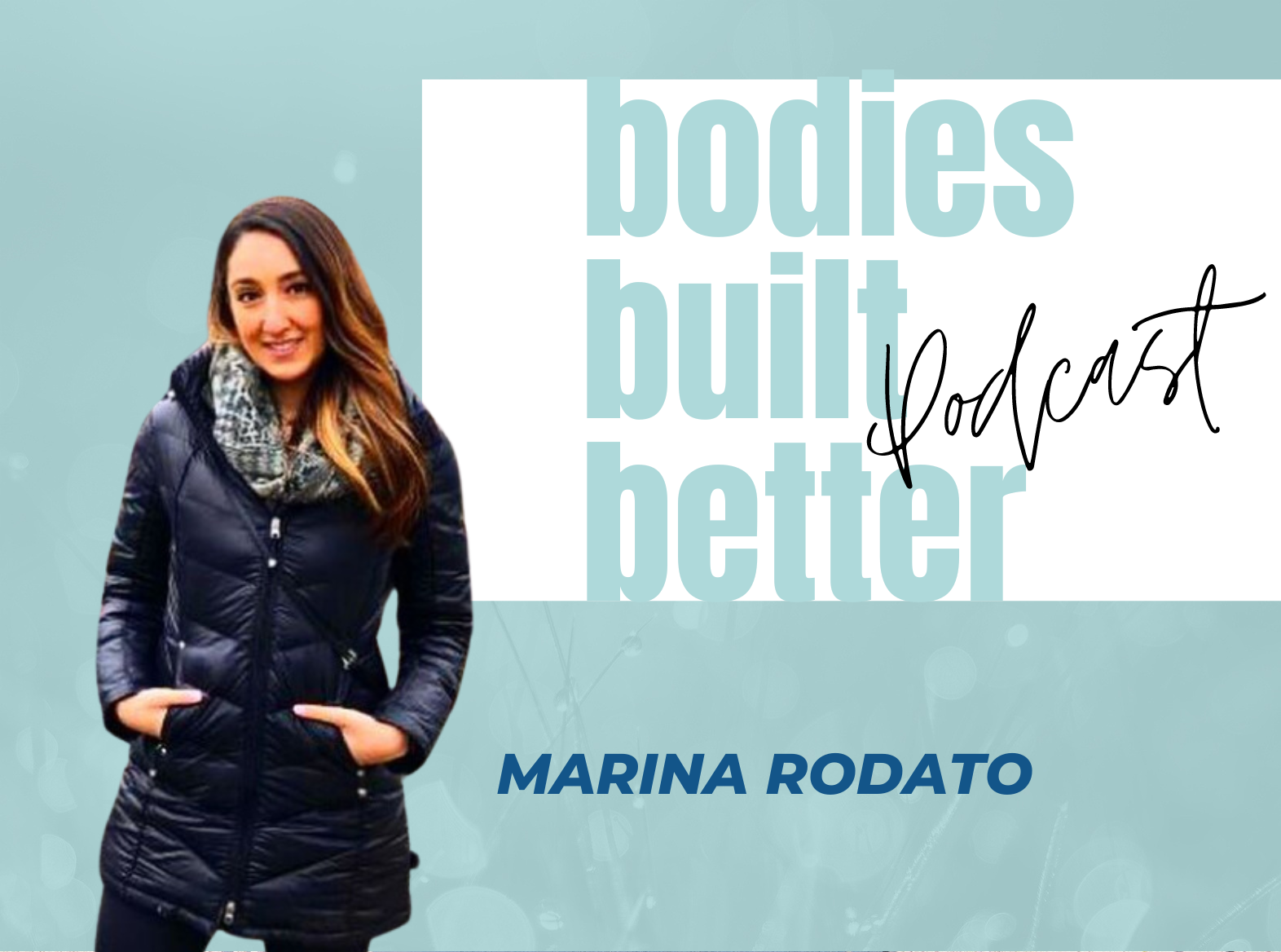How Dr. Cobb Got His Start
Jackie: 0:58
Dr. Cobb, thank you so much for chatting with me today. I was super excited when I got the email that said you would be able to do this interview. And then I had a slight panic attack. Because I thought I knew so little, like, really nothing about the brain. How do you even, how do you even design an interview with questions about something you know so little about? So that’s my confession. But before we get into the questions that probably require a three-hour lecture three times a week for the next three months, let’s start with you. Your background and where you started and then how you got into working on the brain and the movement and building Z-Health.
Dr. Eric Cobb: 4:40
Okay, I will try to keep this brief. Like, I get asked this in every podcast and interview, so I think my answer is getting shorter, but I’m not sure. So, you know, I’ve been fascinated with movements my entire life. Even as a child I tell people; I had this weird combination of probably good athletic genes and good athletic background, with a lot of health defects as well and a bunch of birth defects. And so I was a good athlete [when] I was young, but I had asthma and all kinds of digestive issues, a lot of pain issues. And so that kind of, I think, drove me into wanting to know more about the body. So when I went to college, I decided to study human biology. And then I realised that I was getting closer and closer to graduation, that I had to have a job. And so I said, Well, I’m going to go the doctor route. And I wasn’t sure if I wanted to do a more allopathic traditional medical degree, or if I wanted to do something more alternative. But because I was so much into movement, I’m also, so I was a high level tennis player, I played high level baseball, high-level tennis, and then I was a martial artist. And so I really knew when I went to school that I wanted to basically look at movement. I wanted to be a movement practitioner, movement specialist. So that led me down the chiropractic route. So I went to chiropractic college. When I graduated, and got out into my first practice, I was stunned by having spent so much time and so much money to have very little idea what I was actually doing. And so I think, like most people who kind of branch off into something specialised, I found myself exceptionally frustrated after three or four years in practice. I tell people I love the hands-on aspect of what I did, but I felt like a big walking aspirin. And it also became very apparent, through multiple interactions with different patients, that there were so many things I didn’t know and so many things that I was missing.
How Z Health Came To Fruition
Dr. Cobb 6:52
The, you know, kind of classic story I tell about this is I had a patient who had chronic neck pain. She came in to see me because I had kind of this weird practice where I did a lot of chronic pain work. And I also had a lot of high level athletes, collegiate and professional. So she came to see me for chronic neck pain. And I was throwing everything I knew at her right at that time. I was doing mobilisation, manipulation. We were doing rehab exercises, facial work, all kinds of PT modalities, ultrasound, etc. And I think I’d seen her five times. She really wasn’t making any progress. I mean, she was nice, which most patients are. And they were like, yeah, you know, I think I feel better. But you watch them move. And you’re like, No, you don’t have to tell me that, you know, tell me the truth. But she was very nice. And so I’d seen her on a Monday, we scheduled for a Friday. And normally after six, usually between three and six visits, if I wasn’t seeing good progress with people, I’d go. “Look, I, either I need to refer you or we need to change something dramatically.” So we were kind of coming up on our review. And so she came in on a Friday, and I saw her in the waiting room and saw her walk in and I was like oh my gosh, something had changed. She was remarkably better. And so she came in and I was very happy. I was like, “Oh, this is awesome.” And then like most young practitioners, I thought, well, all the work we’ve been doing, finally kicked in. Like it, they finally started to work. So I started to explain to her, you know, sometimes it takes a while and she’s like, “No, no, I don’t think that’s what it is.” And I’m like, What are you talking about? She said, “Well, I went to the eye doctor on Wednesday, and I changed my prescription. It was really bad and off. I got my new lenses yesterday and my neck felt great.” And so, I tell people that was a blow to my ego. It was also a huge awakening kind of moment, to think that there was, you know, here I am, a supposedly highly trained neuromusculoskeletal practitioner. And I was missing huge chunks of what encompasses movement. So from those kind of humble beginnings, it really took me on what’s now, whoof I have a birthday coming this week. So 26 years. Since that time, I think I’ve been trying to dive deeply into neurology to understand more about how movement is created, how it shaped how it’s built, neurologically. What can we do to influence that? And that’s kind of all those things that led to developing the Z-Health curriculum as it currently stands.
What We Need To Understand About The Brain
Jackie: 9:26
That’s phenomenal. And I’m currently going through our phase, and it’s just, it really is blowing my mind, everything that you know you’re teaching and everything that we are capable of, and the brain is just so super fascinating. So, to start off the first question, what do we need to understand about our brain when it comes to movement patterns? As children, and then growing up through the teenage years, and then as adults.
Dr. Cobb: 10:08
What’s the one thing?
Jackie: 10:11
Where do you start? How many things?
Dr. Cobb: 10:14
There’s a lot that we need to know. But let me, let me start with just some kind of basics. So, I will start this off initially, because I’ll probably–a lot of people who are unfamiliar with neurosciences [which] has evolved over the last really, probably two and a half decades, may not be familiar with the idea of what’s called neuroplasticity. So neuro, brain, or neuronal activity is plastic, it’s bending, meaning that it changes. I still have textbooks in my closet from when I was in school, and anatomy textbooks, neurology textbooks that basically said, the human brain develops until a certain age, usually that age was twenty-five. And then it stops, right, it’s, everything’s kind of fixed, and then it’s just downhill from there to the grave. And we now know that that’s not only in–not only partially incorrect, that’s completely incorrect. So our brains are malleable, they are changeable. And this is one of the, I think, first governing principles that people have to understand. So movement is driven by brain activity. Movement alters brain function, and ultimately alters brain structure if we do it repetitively. So we are in this kind of ongoing constant process of reshaping our brains by what we eat, how we breathe, how we move, how we think, how we use our eyes. And like I said, I think it’s very important for people to understand that that’s, that’s not an occasional thing. When neuroplasticity became common, at least a common term to be used in the industry, it was used around injury. So let’s say you had a traumatic brain injury, you had a stroke, well, they would say now, plasticity will kick in as you start to rewire and use different areas of the brain to do different things. Once again, incorrect, if that is true, but we are all experiencing plastic change over time. And like I said, that’s very much driven by the choices that we make, and by the way that we interact with the world. So that’s number one is that the brain is malleable. Number two, regardless of the age, we need to understand that they’re kind of general systems principles that go into movement, right. So whenever we talk about movement, in a very broad kind of, you know, 30,000 foot overview, we’ll talk about major systems, so your eyes, your visual system, your inner ear, or vestibular system, and then basically our somatosensory/proprioceptive systems so big whenever we look at movement in a real environment. Normally, sighted people primarily use their eyes to move through that environment safely, right, that gives them the most information. What we fail to often take into consideration is that our eyes work intimately with our vestibular system, which is our inner ear, which keeps us upright. So, deficits in the visual system, deficits in the vestibular system, deficits in both will all eventually echo into our musculoskeletal system. So whenever we’re talking about movement, I, you know, what we’re, been trying to get across in this industry for the last two decades, is that movement is a sensorimotor activity. It’s not a motor activity, right? We tend to think of movement as, “hey, I’m moving something,” but it’s sensory. Can I feel what’s in my hand? Can I feel my body? Can I see what’s occurring? Can I understand my relationship to gravity? So while all that sounds kind of complicated, it’s once you understand each of the systems, it’s not that hard, you start to recognise that we have to as movement professionals, at least we have to evaluate the visual system, evaluate the vestibular system, look at the proprioceptive system, then we have to look at the brain areas to say, “Hey, do the eyes and inner ear, do they say the same thing? And is the brain understanding that?” So like I said, for me, I think understanding that we’re plastic, and that there are multiple systems involved in movement beyond muscles, tendons, ligaments, fascia, and peripheral nerves, I think is a great starting point for almost everybody.
Understanding Skills
Jackie 14:19
Yeah, for sure. And it’s empowering as well. Because it’s, it’s almost like, well, my skills or my movement now is not it’s not a life sentence. We can change, we can get better, and conversely get worse if we don’t use our bodies as well.
Dr. Cobb 14:42
Right. So one of our common sayings is, everything’s a skill, right? And what do we know about skills? You can learn them, and you can lose them.
Jackie 14:47
Yeah.
Dr. Cobb 14:49
That’s, I think one of the key pieces to recognise and I just like to have people understand that skills are multi-dimensional. Right? If you are a good tennis player, it’s important to have a great forehand stroke, but you have to have the timing, you have to have the visual ability to track the ball. So there’s a lot that goes into hitting that great forehand. So, we love the idea that we can reverse engineer that and isolate down each of the systems and see if we can clean up, you know, aberrancies or dysfunctions in each one of them.
Expertise Development And The Ten-Thousand Hour Myth
Jackie 15:18
That’s brilliant, because that literally goes into my next question, which is–
Dr. Cobb 15:23
I was intuiting.
Jackie 15:28
–learning new movement skills, and, you know, you hear so commonly, you know, the 10,000 hour rule of times, or whatever it is, is, is that true to learning new skills? Is there a brain hack in developing new skills quicker or easier?
Dr. Cobb 15:50
Yeah, really interesting question. So this is that, this was popularised, people took work by Malcolm Gladwell, who was basically looking at the work of a man named Anders Ericsson, who is one of the premier talent researchers in the world. And the 10,000 hour rule sounded super cool for the media. I like to call it the 10,000 hour myth, because it’s not a rule. And there are massive exceptions on both sides. So the real question is expertise development, right? Whenever we want to learn something, how do we maximise our ability to learn it quickly, and more importantly, retain and enhance it? So the. to generally answer this question. I think one of the important things you can look at is kind of, the history of movement athletes. So whenever you look at really high level athletes, particularly in skill positions, and a lot of sports, one of the things you figure out very quickly, is that most of them when they were young, were multi sport athletes. They rarely, were over-specialised in only one thing. Now, that’s not always true. But particularly Ericsson’s research, in some subsequent research, you have looked at high level athletes who have, who have broken that 10,000 hour supposed barrier. What they found is that those, that athletes who are most likely to only need maybe 1000, or 2000 hours of practice to become world class, already had a map of sport, right, they had a brain map of multiple versions of movement, multiple versions of teamwork, or whatever. And so the, the greatest hack you–I guess you can give people, conceptually, is that very movement experiences offer one of the greatest and fastest ways to learning skills more quickly. You know, the kind of underlying factor in all this, from our perspective is that we tell people that your brain wants to be safe, right? Number one, first and foremost, the job is not to perform, your brain actually doesn’t care if you can, you know, win a gold medal, it cares that you survived the attempt at winning the gold medal, at the most basic level. And so we use this concept of mapping all the time, right? If you’ve ever been driving in your car using a GPS, and all of a sudden, you lose contact with a satellite. And now you don’t know where you’re going, all of a sudden, what do you do? Well, you slow down, you start getting a little bit more nervous, sometimes you have to pull over, you do something really clever, like hold your phone up to the sky.
Jackie 18:39
Closer, right?
Dr. Cobb 18:40
Just get closer. So we do all these kind of weird behaviours, because we don’t know where we’re going. And movement works very much the same way. So if you’re trying to learn something new, and you’ve not had the opportunity to build a map for what those movements feel like, it’s gonna be super natural for your brain to feel threatened. So the end goal of that, then is, from our perspective, is that one of the jobs of good movement coaching is to give people varied experiences, as many as they can comfortably take on in most sessions. And this applies not just to learning sports, but just to moving through the world safely. Right? And I say all that and people go How do you give someone a very moving experience? That sounds weird, it’s actually not very hard, but it would be, it still blows my mind.
The Motor Learning Process: Why Visual Learning Works
Dr. Cobb 19:33
I’ve gotten probably, you know, 5000 different gyms now in my life. And what we see are kind of industry standard training programmes which are fine for what they are. But you know, does it cost you anything too, while someone’s doing some relatively comfortably loaded squats or bodyweight squats to have them turn their head left? turn their head, right, look up at the ceiling, tilt their head right, tilt their head left, Those sound like why would I do that, that’s not perfect technique, I understand that that’s not what we’re teaching someone to do in a powerlifting meet. But if I’m trying to prepare you to pick a box up on your shoulder, what are you going to do, you’re going to put it on your shoulder, you’re going to tilt your head left, and you’re going to try and get up and down out of the truck. So the simple example here is that it doesn’t have to be weird or strange or complicated. We can offer movement variety, visual variety in almost everything we’re already teaching. And the benefit of that is we make the brain feel less threatened if it’s required to go into any of those positions, or adopt any of those aspects of movement in something new.
Jackie 20:40
So is it about doing the thing that we know how to do and then adding those new movements?
Dr. Cobb 20:47
Yeah. When it comes to speeding up the motor learning process, the more we can associate something with a new movement, or something we already know, usually, we will retain it or learn it more quickly. So for instance, whenever I was, I think 14 or 15 years old, I started teaching tennis lessons. I was teaching martial arts at the time as well. But I had the coach I was working with, I was teaching beginners. And we had kind of this very standard way of teaching, here’s how to do a forehand, here’s how to do a backhand. And most of it, a lot of it was a verbal description and visual description, right? You show them and then you tell them what to do. And even at that age, I learned very quickly that a lot of my students didn’t respond very well to verbal descriptions. So I started trying to come up with something that they already know, right? What is the shape, right? So if I were to say, what I want you to do, if you’re taking the racket bags, I want you to make an L between your racket and the wrist. And all of a sudden they go, Oh, well, that’s easy. So whenever we give someone a movement cue that they can, that’s associated with something they already understand, they tend to learn it or pick it up much more quickly.
How To Get Better, Faster, And Stronger Using The Brain
Jackie 22:03
Brilliant. So I’m, I’m not sure if you’ve kind of been, answered this question, but I’ll ask it anyway. If, if we’re already good at a particular movement, and I guess we’re talking about athletes who want to get that 1% better? How? How do we get that 1% better, faster, stronger?
Dr. Cobb 22:26
Yeah, that becomes a, I mean, you can take some of the things that we’ve already said and play with them. But that becomes a little bit more challenging, because there’s not going to be a super simple answer. Because whenever you look at someone who is already, you know, 90% to their genetic capacity. Now you become more specialised, where you have to start saying, what are the small things that maybe are happening in your neurophysiology that are problematic? Most of the elite athletes that we work with, will wind up doing visual testing, vestibular testing, or specific joint testing. But the way that we wind up usually having to do it for these athletes is in the position of their sport, which is also something that I think is very different than what most people are familiar with. Most people when they have their eyes tested, you know, they’re sitting, sitting in the chair and lean forward into that little machine, or whatever. And that’s cool, tells us a lot of information. But you have to understand contextually that whenever we change your body position, we change movement, we’re gonna change function everywhere. So, particularly for a high level athlete, let’s say we’ve taught them a vision drill standing Well, now we’re going to put them into their sport stance, we’re going to repeat that vision drill. This may sound weird, but you know, if I have a gymnast who’s struggling with enhanced standard, guess what we’re going to do a support handstand. And we’re going to do the vision drill with them upside down.
Jackie 23:53
Wow.
An Example Of Athlete-Specific Brain-Based Training
Dr. Cobb 23:56
You know, one of the I haven’t had a really interesting case, the reason it’s always stuck in my head is just because of what it led to. We have a tonne of trainers now in professional soccer, professional football around the world. And it started in Germany primarily to the point now that DFB which is the primary German Football Association and Academy, they’ve now opened their own what they call neuroathletic centre. But it all happened after working with, within one specific athlete who was one of their top level Bundesliga players and he had had a he was having ankle pain. He’d had all kinds of treatments done on it, and he still couldn’t play and he had been able to play for I think two months when I was teaching at the Olympic Centre in Denmark. And I flew him over so we did a quick evaluation. And what was very clear as soon as he started walking, his head was just mounting all over like a bubble. And that’s one of the things that we tell people to watch for, right. Your heads shouldn’t you know, you shouldn’t look like some weird toy you’re walking. So I, in the history, I said, you know, I’m assuming you’ve had multiple concussions because most, he was a defender. Most of these guys have had a lot of head trauma. He was like, Yeah, and I saw I got more deeply into his history. And he had a concussion about two months prior to the ankle injury and pain beginning. And so rather than focusing on his ankle, we did a bunch of testing besides a bunch of testing with the vestibular system. And very quickly figured out that if we did some specific vestibular stimulation, his ankle pain went away. So that was cool in a training room. But because we, this was a very short time window, I said, Well, since you’re pain free, now, it would, because his ankle had been like a six or seven out of 10. I said, Let’s go out and run. So I took him out, we had to do some running on the field. Pain was still good. And so then I said, Well, now let’s take a look at jumping and heading. So it wasn’t until we actually got him jumping in heading. And if you don’t know anything about the vestibular system, we have specific organs that sense vertical movement, right? It’s called the sacral. And the heading motion, specifically, you know, if the ball’s coming, and I’m using, let’s say, the right side of my head, my head is going down. So I’m usually left rotating and flexing my head and neck. Well, that is a stimulation for one also specific canal in the inner ear. So left side, he was fine. right side while jumping, his pain came back. So it wasn’t until we got very specific with his sport activity that we were able to kind of very clearly figure out what part of the vestibular system was problematic for him. And then, you know, we were able to build drills to help solve that. So that’s kind of a, that’s a long winded answer. But the point is, when you’re already world class at something, you may need more specific fine tuning. And so it’s impossible to say definitively, it’s going to be this or that. But what I can say is that whatever mobility work you’re already doing, or whatever other rehab work you’re already doing, you might find a huge benefit in doing it in the sport specific position, like the spot where you’re having the problems.
Jackie 27:14
That blows my mind. I mean, really, how long did, how long did it stick? So going back, how long do you have to be doing those drills for it to stick?
Dr. Cobb 27:30
So well, in that particular case, so that was, that was one of those awesome, fun ones? Because, yes, exactly two hours, and he was done, like his pain.
Jackie 27:40
Wow.
Dr. Cobb 27:41
He was back to playing the next week. So that was cool. Now, is that the case for everybody? Absolutely not.
What Happens To The Brain When We Learn Something New
Dr. Cobb 27:47
So the thing you have to understand about neurology is that people right now, because this idea is becoming more common, people get really excited about it, because hey, try a forward bend, now do this with your eyes, hey, look, your forward bend improved. So that’s a cool thing to see. But the, the important question is exactly what you asked, which is well, for how long? So to understand why all this works, or how it works, you have to do, know a little bit about the motor learning process, right? So whenever we are talking about movement, and the movement assessment and moving, moving evaluation, there are multiple levels and all that. So the thing that we see with any training session, so let’s say you have a shoulder, you’re having abduction issues, and I say, Okay, I want to test your eyes, and I test your eyes, and all of a sudden your abduction improves by 30 degrees. Yay! That is called a change in motor performance. Right? That’s the kind of near instantaneous change that we see. And whenever we look at what’s happening in the brain, we’re seeing kind of almost instantaneous changes in blood flow and activation patterns in different areas of the brain. And as a result of that, we can see some really remarkable changes in range of motion and pain. That does not mean that your brain has learned it yet.
Jackie 29:06
Yeah, so.
Dr. Cobb 29:08
So a motor performance change is not the same thing as motor learning. Motor learning takes longer. And motor learning is associated with actual structural changes in the brain itself. So once you’ve learned something, if we did a pre- and post- picture of your brain, we typically see changes in the thickness of grey matter, or we would see changes in the activation inhibition patterns. How long does that take? That also varies tremendously. Person to person, in general, for something to become really sticky, where you know, it was a problem, and now it’s no longer a problem. You are looking at probably accumulating somewhere between 60 and maybe up to 100 minutes per week of practice for four to eight weeks.
Jackie 29:58
Yeah.
Dr. Cobb 29:59
At that point, we see some, pretty soon you can see some pretty significant change, at least on imagery. And again, it depends on the complexity of what we’re trying to achieve. So, you know, I, like it said, it’s, I love neuro, if it’s super cool and interesting, see people change like this. And sometimes it’s, sometimes it’s literally done. But I tell people don’t be frustrated if that’s not the case for you. Because for most of us, we’re going to have to put in some time and some effort. Because we, the way I explained it to clients is like, Look, we have to do it enough that your brain understands it’s important.
Jackie 30:32
Yeah.
Dr. Cobb 30:33
Once it understands, instead, it’s important, it will begin to change. Most people wouldn’t expect to do one workout and be as big and as strong as they want.
Jackie 30:42
Exactly.
Dr. Cobb 30:43
Right. They know that they’re going to be okay, I gotta, I gotta at least get three workouts.
Jackie 30:50
What, those 10 crunches don’t give me a six pack? Come on, man.
Dr. Cobb 30:55
I wish they did, we’d all do it.
Training And The Brain: How Long Before You Can See Changes?
Dr. Cobb 31:01
So yeah, but like I said, The cool thing is that we’re getting more and more information and more data about how quickly the brain changes. I was just looking at a study this morning on vision training, it was just published last year. And it was, they took 15 healthy people, it was a six week study, they were doing 30 minutes of training five days a week, over six weeks. And at the end of it, they saw exactly what we’re talking about, big changes in the amount of grey matter in certain areas of the brain, different activation patterns. So the four to six week window, if you’re doing consistent work four to five times a week is a really kind of good benchmark for most people to actually create long term, or longer term change in the brain.
Where to find Dr Cobb and Z Health
Website: https://zhealtheducation.com/
Instagram: @zhealth_performance
You Tube: ZHealthPerformance
Facebook: @ZHealth
Free Course: NeuroFundamentals












